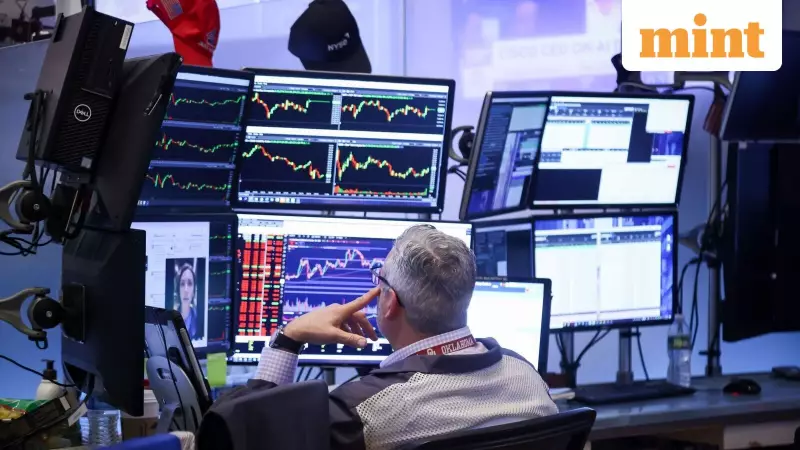
A palpable sense of unease returned to the Indian equity markets last week, with buying conviction remaining notably weak despite marginal gains on the key indices. The nervous sentiment, particularly evident on Friday, has set a cautious tone as traders look ahead, guided by the historic sell-off in global AI leader Nvidia, a weakening Indian rupee, and poor internal market breadth.
Key Market Drivers and Global Headwinds
The optimism from a potential US-India trade deal that buoyed markets in the first half of the week was quickly overshadowed by growing global caution. Prominent CEOs and money managers began sounding alarms on AI-related stocks, a warning that was starkly validated by Nvidia's earnings. The chipmaking giant experienced a historic single-session loss of market capitalization, sending ripples of concern worldwide. This has raised the specter of a 'crowded exit' in global markets, where a mass simultaneous sell-off could trigger a substantial price decline.
Compounding the global tech worries are significant domestic pressures. The Indian rupee hit a new low against the US dollar, reviving fears of 'imported inflation.' As a net importer, India will face higher landed costs for goods, most critically for multiplier commodities like oil and gas. This has a cascading effect on the prices of everything from transport and power to food and medicine, potentially squeezing household savings and, consequently, retail investments.
Commodities and Currency: A Mixed Bag
The commodities market presented a divergent picture. While oil prices eased, natural gas saw buoyancy due to seasonal winter demand for heating. However, prices on the MCX may see a disproportionate rise due to the weak rupee, a crucial point for new traders. Industrial metals witnessed a mini-selloff as the initial AI-driven exuberance for copper, linked to expected power demand, cooled down.
In the bullion space, silver saw larger price increases, but veteran analyst Vijay L. Bhambwani reiterated his red flags about excessive leveraged buying in the margin-funded trading (MTF) segment. Complacent bulls are now facing a 'double jeopardy' of mark-to-market margin calls and interest costs, creating muddied waters in the near term despite the long-term validity of holding bullion.
Retail Sentiment and Technical Prognosis
An analysis of retail risk appetite showed a contradictory picture. While turnover data suggested traders were optimistic, deploying more capital in high-risk futures and stock options, other indicators told a different story. The NSE advance-decline ratio was weak at 0.74, meaning only 74 stocks rose for every 100 that fell, indicating very poor intraday buying conviction.
From a technical standpoint, the Nifty 50 formed a weekly candle with a prominent upper shadow, showing that bulls attempted to push prices higher but faced strong resistance. A sustained move above the 26,277 level is critical for the bulls to regain initiative and confirm the possibility of a fresh rally. On the downside, the 25,600 level must be defended to prevent further declines. For the coming week, Bhambwani estimates a trading range of 26,575 to 25,550 for the Nifty and 60,050 to 57,700 for the Bank Nifty.
Call to Action for Traders
Given the heightened volatility from derivative expiries and global triggers, retail traders are advised to tread carefully. The market-wide position limits (MWPL) indicate some exuberance and potential for high volatility. Traders must enforce strict stop losses, consider tail risk hedges, and maintain a light footprint. Avoiding counters with wide spreads is also recommended to navigate what promises to be a slippery week.





